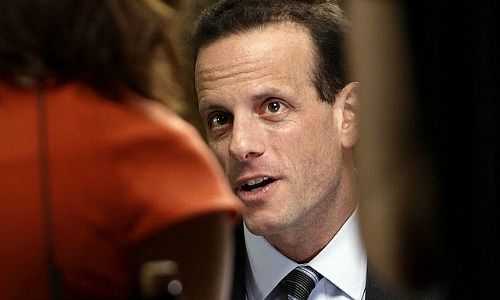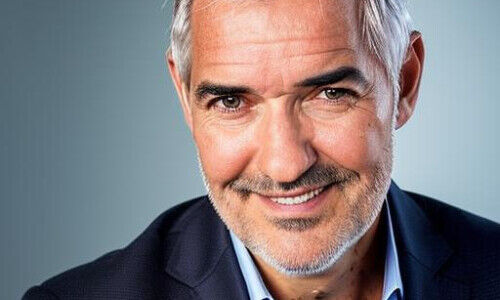Swiss asset manager GAM, led by Chief Executive Alex Friedman, is in the most severe crisis in its history. Its traditional business model is antiquated, and Friedman’s new strategy isn't bearing fruit yet.
Friedman has to ignore short-term doubt-digit share price drops in favor of focusing on the strategy, he told finews.ch in an interview earlier this year.
But increasingly, Friedman will not be able to ignore the dramatic share price slide. Even GAM’s most loyal investors sought the exit following Tuesday’s profit warning, apparently because they fear a reduction in dividend — the payout has been kept stable in recent years.
Like Credit Suisse
GAM has lost nearly 30 percent of its market capitalization in one week, a loss of trust that is reminiscent of Credit Suisse, where CEO Tidjane Thiam is stuck in a bind before the bank’s new strategy takes hold.
There are other similarities: the U.S.-born Friedman took over from another American, David Solo, who left having concluded „this broad transformation to a sound, diversified, independent company“.
Fund Outflows, Profit Shrinks
Solo’s words were wildly exaggerated: Friedman took over an asset manager which was badly prepared for a seismic shift in the asset management industry. Under Friedman, GAM’s asset base has shrunk and its profits have dwindled.
After he took over nearly two years ago, Friedman quickly adapted a new strategy which looked sensible in paper: GAM was to focus on clients who wanted to pursue active strategies in alternative investing.
At the same time, Friedman wants to strengthen GAM’s distribution and streamline its organization. He went on an acquisition spree in order to win critical mass, especially to offer U.S. stock strategies. These promise more volume than niche alternative strategies that GAM had until now been offering.
Uncertainty and Poor Performance
The strategy isn't bearing fruit, as Tuesday’s profit warning shows. There are two reasons for this: firstly, clients are still extremely nervous about investing in times of extreme uncertainty of monetary policy.
To be sure, this isn't a problem for GAM alone, but it does hit the asset manager’s net new money.
The second reason is that GAM’s products aren't performing in the current environment, as shown by a stunning drop in first-half performance fees to 1 million francs from 44 million last year.
The toxic combination of nervous, risk-shy clients and poor performance had shot holes in Friedman’s strategy, which has led to asset outflows from GAM.
Winning Strategy
GAM is losing money in a market situation which should suit its Absolute Return funds perfectly, but this has not proven the case, and both index products and exchange-traded funds merely mirror the market.
GAM’s problems go far further back: founded in the 1980s by asset management pioneer Gilbert de Botton, the hedge fund boutique has operated under a variety of structures and owners in the last 15 years which practically guaranteed a large part of its income.
The private banking channels of first UBS then from 2005 on Julius Baer ensured a steady stream of private clients willing to buy GAM’s products without question.
New Client Type
But in recent years, clients have been demanding far more: they are more sophisticated, better informed, have specific returns in mind and are far more sensitive to prices.
This is compounded by the asset management industry’s structural change: today, highly efficient sales and distribution organizations are winning, with critical mass, a broad product palette and geographical diversity.
Murky Public Image
Another of GAM’s problems is that it is practically unknown to a wider public. Friedman rebranded the asset manager, but GAM’s business remains murky for the man on the street. This is in contrast to the U.K.’s M&G or Aberdeen, which have been savvy about advertising on Swiss ski pistes or Zurich trams to raise awareness of their brand.
To be sure, it doesn't make sense for an alternatives specialist like GAM to seek the same publicity in the hunt for assets, but it does highlight one of the firm’s weaknesses.
Problematic Niche
GAM is pursuing global ambitions, so it has to aim for size while also drastically cutting its cost base. As a provider of products which are known for being quite expensive niche products, it is difficult for the firm to be measured on performance in a difficult, risk-averse market.
Friedman’s pledge to lower costs even further and to expand GAM’s product line even further through acquisitions is no longer credible for investors, who want products with good returns and a firm which can win new assets on its own.
Both of those things take time, which Friedman has repeatedly said. He has yet to prove that GAM will return to its roots as a leading investment house.






























